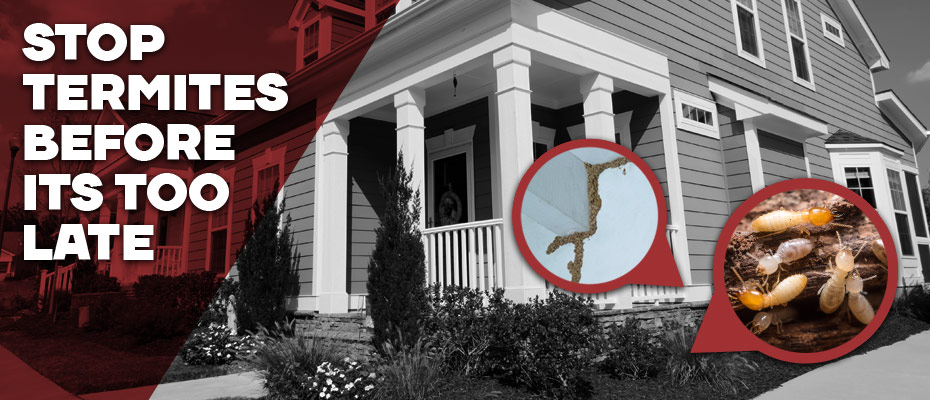Termite Treatment SERVICES
Termites are social insects, working and living together in groups called colony. Each colony contains several types termite individuals (castes) which differ in body shape and behavior and each caste performs different tasks. These castes are identified as:
- Workers
- Soldiers - distinguished by their heavily armored and pigmented heads
- Reproductive (i.e. Queen and King)
Termites are the most dangerous pest which is come to structural damage of homes & office’s wooden furniture, paper and clothes. Most of this damage is caused for food containing cellulose such as wood, paper, clothes etc. They construct pathways or mud tubes from nest to food source. These tubes are sure sign of infestation.
Anti-Termite treatment service is better than expensive cure.
Types of treatment & Method of treatment:-
- Anti-Termite treatment for post-construction.
- Anti-Termite treatment for pre-construction.
Pre & Post construction anti-termite treatment:
- Soil treatment along external perimeter of building:
Masonry foundation: Treatment of the soil in contact with the external wall of the building with chemical emulsion @ 7.5 ltr/m2 of vertical surface of substructure to a depth of 300mm.
- Treatment of soil under floors (within plinth area): Wherever cracks are noticed, drill 12mm holes at the junction of floor and walls, constructional and expansion joints at 300mm interval to reach soil below. Squirt the emulsion using hand operated pressure pump until refusal or to a maximum of 1 ltr per hole and plugging with cement mortar 1:2 (cement: coarse sand). Minimum depth of hole should be 300mm.(same as in pre-const except the interval)
- Treatment of voids in masonry: The movement of termites through masonry walls may be restricted by drilling holes in masonry wall at plinth level at 450downward angle preferably from both sides of the plinth wall and 300mm apart and squirt the emulsion in the holes till refusal or to a maximum of 1 ltr per hole, and seal with cement mortar to full depth of hole. Depth of hole shall depend on the size of the wall e.g. for normal size brick wall of 230 mm (9”), depth of hole shall be 150 mm (6”). Holes should be drilled at critical points, such as wall corners and where doors and window frames are embedded or floor at ground level.
- Treatment of points of contact of wood work: Woodwork in contact with the floors or walls and which is infested by termites shall be treated by spraying at the points of contact with adjoining masonry and by drilling at the junctions of woodwork and masonry 6mm dia holes at downward angle of 450 and squirting chemical emulsion into these holes till refusal or to a maximum of @ 0.5 ltr/hole. The holes shall then be sealed.
- Treatment of woodwork:
- Woodwork that is damaged beyond repair by termites shall be replaced.
- New timber shall be dipped or liberally brushed at least twice with chemical in oil or kerosene.
- Infested woodwork in Chaukats, shelves, joints, purlins etc in contact with floor or walls shall be drilled with holes of 3mm dia with downward slant to the core of the woodwork on the inconspicuous surface of the frame. These holes should be at least 150mm centre-to-centre and should cover the entire framework. Chemical shall be liberally infused in these holes.
If the wood is not protected by wood or varnish, two coats of chemical shall be given on all the surfaces and crevices adjoining the masonry.
-
Treatment of Electrical Fixtures:If infestation in electrical fixture (e.g. switch boxes) is noticed, covers of such boxes shall be removed and inside of such boxes shall be treated liberally with 5% Malathion dusting powder. The covers shall be refixed after dusting.
Treatment of upper floors: In case of infestation of upper floors, treat ground floor of the existing buildings as described above.
